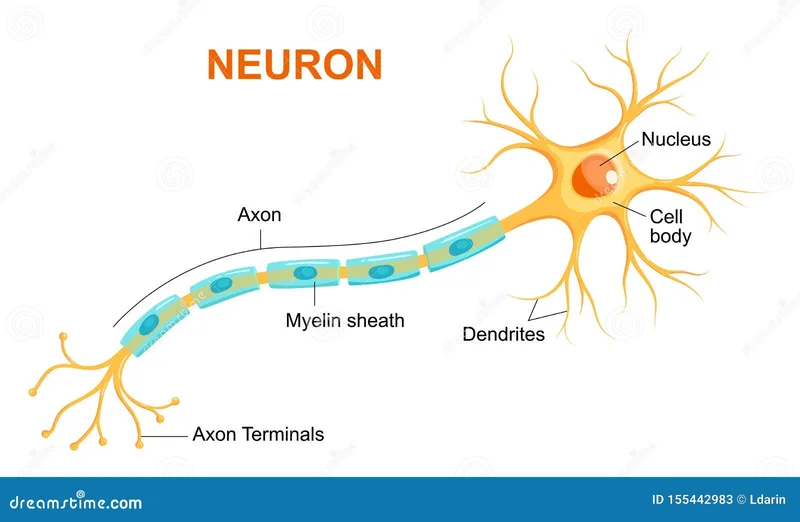The conventional narrative surrounding complex neurological conditions often seeks a single, decisive cause—a rogue gene, a chemical imbalance, a specific environmental trigger. This search for a simple explanation is understandable, but it rarely reflects the biological reality. A recent study published in Molecular Autism, Age-related differences in axon pruning and myelination may alter neural signaling in autism spectrum disorder - Molecular Autism, provides a compelling, data-driven look into the architecture of the brain in Autism Spectrum Disorder (ASD), and its findings suggest we may be framing the entire question incorrectly.
The paper doesn't offer a simple answer. Instead, it presents a detailed structural schematic of a brain that appears to be wired to a different specification. It’s less about a deficit and more about a fundamental trade-off in network design.
At the heart of the matter are axons—the microscopic nerve fibers that act as the brain's communication wiring. During typical neurodevelopment, the brain undergoes a crucial optimization process. It aggressively "prunes" redundant, smaller axons and progressively wraps the remaining, more important ones in a fatty coating called myelin. This process is like a city upgrading its infrastructure: it decommissions inefficient local roads to build high-speed, insulated superhighways. The result is faster, more efficient communication over long distances. The data from this study, however, indicates that in the temporal lobes of males with ASD, this optimization process follows a distinctly different trajectory.
A Different Developmental Blueprint
The researchers used electron microscopy to examine postmortem brain tissue, a method that provides an almost uncomfortably granular view of cellular architecture. What they found was a consistent and significant pattern. In the neurotypical brain, childhood and adolescence are periods of intense pruning, clearing out the dense thicket of short-range connections to favor more streamlined, long-range pathways. In the ASD brain, this pruning is diminished. The forest of small-diameter axons—the "local roads"—remains unusually dense.
Simultaneously, the development of myelin (the fatty sheath that acts as an insulator for neural signals) on the larger, long-range axons is altered. Instead of thickening with age to speed up transmission, as seen in neurotypical development, the myelin sheaths in the ASD brain samples remained persistently thinner.
Let's put this in quantitative terms. The study observed that in the superior temporal gyrus, the abundance of small-diameter axons persisted with age, and the typical age-related thickening of myelin around large-axons was absent. This wasn't a random anomaly; it mirrors previous findings in the prefrontal cortex. I've analyzed countless datasets claiming to find 'the cause' of complex phenomena, and most are noise. This study, however, presents a structural pattern so consistent across two critical brain regions that it's difficult to dismiss. It points not to a system that is broken, but to one that is optimized for a different purpose.

Think of it as two different network engineers designing a city's data grid. Engineer A prioritizes bandwidth between major data centers across the city. They lay thick, high-speed fiber optic cables (heavily myelinated, long-range axons) connecting distant hubs, even if it means sacrificing some local street-level connectivity. Engineer B, however, prioritizes lossless, high-fidelity data transfer within each individual neighborhood. They install a dense mesh of local cables (an abundance of small, unmyelinated axons), ensuring every single house has a perfect connection to its immediate neighbors. The trade-off? Data transfer between neighborhoods is slower and less efficient. Neither grid is inherently "wrong," but they will produce vastly different outcomes in how information flows.
From Structure to Function
This "local hyperconnectivity" model isn't just an abstract observation; it has profound implications for function. The temporal lobe is a critical hub for processing language, social cues, and sensory information. The study’s findings suggest a brain architecture that may excel at high-resolution local processing but struggles to integrate that information with signals from more distant brain regions in real-time.
Could this structural bias explain some of the core characteristics of ASD? An intense focus on detail, sensory sensitivities (an overload of local information?), and challenges with interpreting broad social context (a deficit in long-range integration?) all seem logically consistent with this wiring schematic. The data suggests a potential physical basis for these experiences. The study found that these developmental trajectories diverge early and persist across the lifespan, potentially contributing to a cascade of effects on cognitive function. Growth was not just different, it followed a different curve—to be more exact, the typical decrease in axon density and increase in myelin thickness with age was not observed in the same way.
This brings us to the critical questions the data doesn't answer. If the brain is preserving this dense local network at the expense of long-range efficiency, what, if any, are the cognitive advantages? Is it possible this configuration supports specialized abilities or modes of thinking that a "pruned" brain cannot achieve? And does this force us to reconsider what we define as optimal brain function?
Of course, we have to approach this with caution. The study itself is transparent about its limitations (inherent in all postmortem research), including small sample sizes and a focus on males, which may not represent the full picture. The correlation between these structural differences and specific symptoms is still an inference, not a proven causal link. We simply don't have the data to draw a straight line from axon density in the fusiform gyrus to a specific behavioral outcome in a living person. But the pattern is there, and it's robust.
A Blueprint for a Different Network
Ultimately, what this research provides is not a cure or a cause, but something arguably more valuable: a high-resolution map of a different kind of neural architecture. It shifts the analytical framework from one of "disorder" to one of "different organization." The data strongly suggests that the autistic brain isn't a typical brain with a few broken parts; it's a brain that was built from a divergent blueprint from the start, one that systematically prioritizes local data integrity over global network speed. This isn't a value judgment. It's a statement of physical configuration, and understanding that configuration is the only logical starting point for any meaningful inquiry that follows. The most important question is no longer "What's wrong?" but "How does this system work?"









